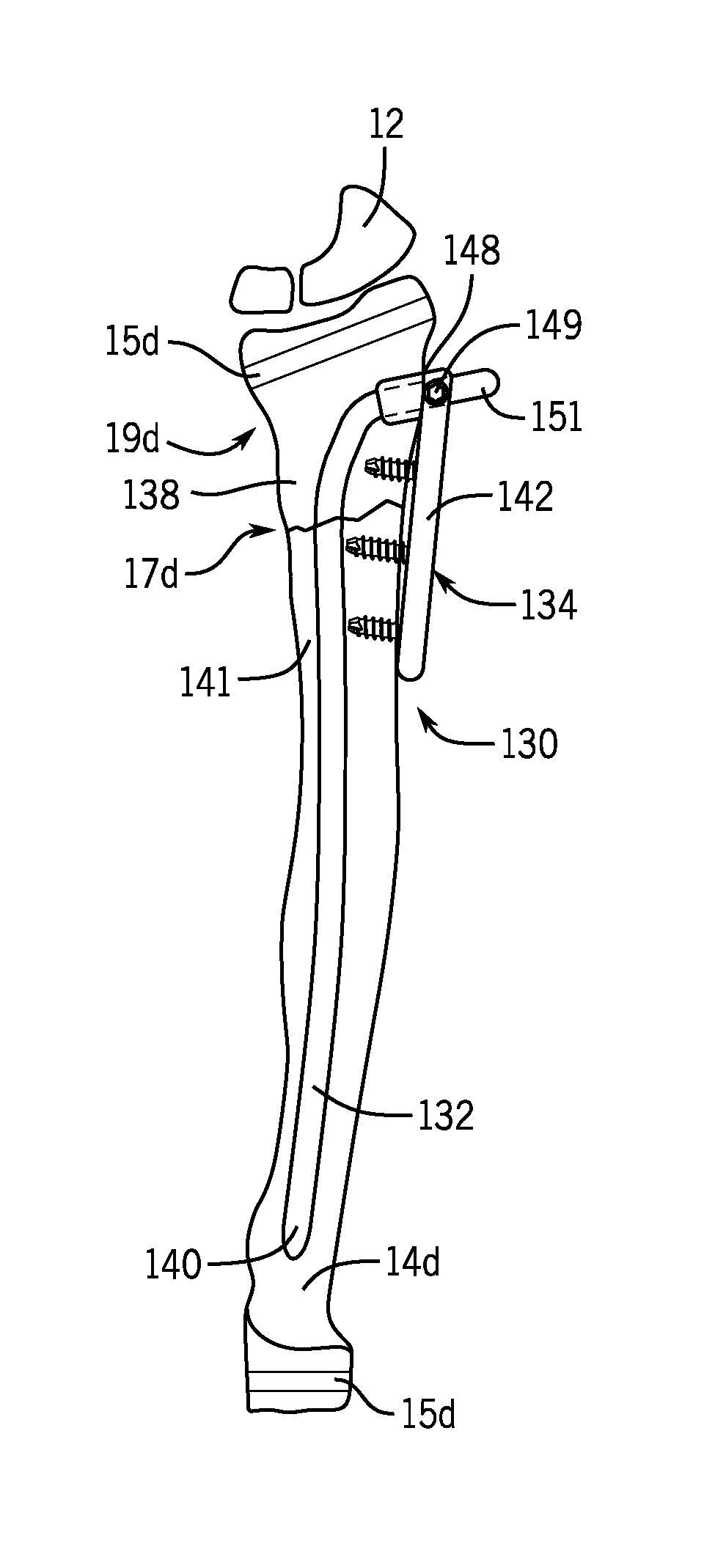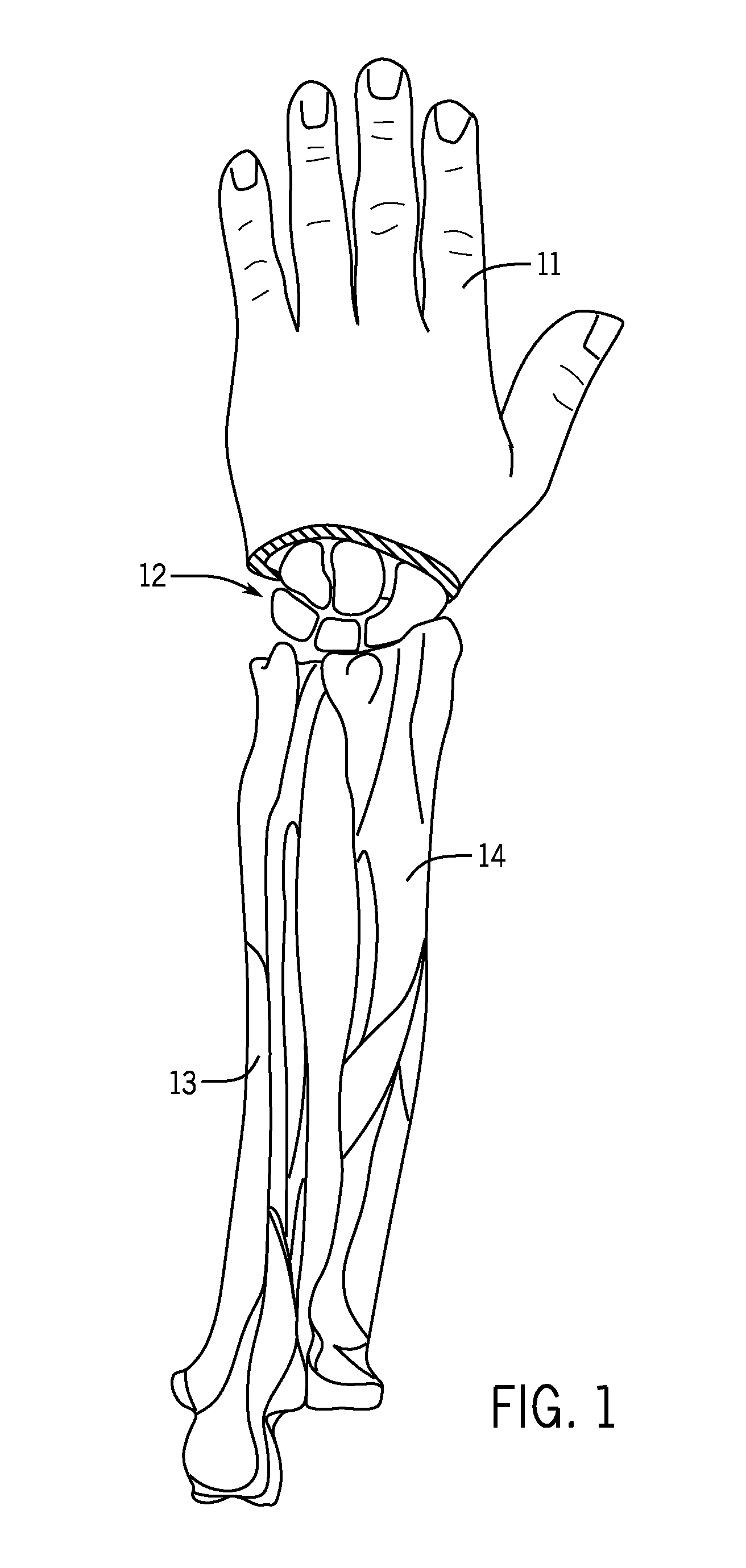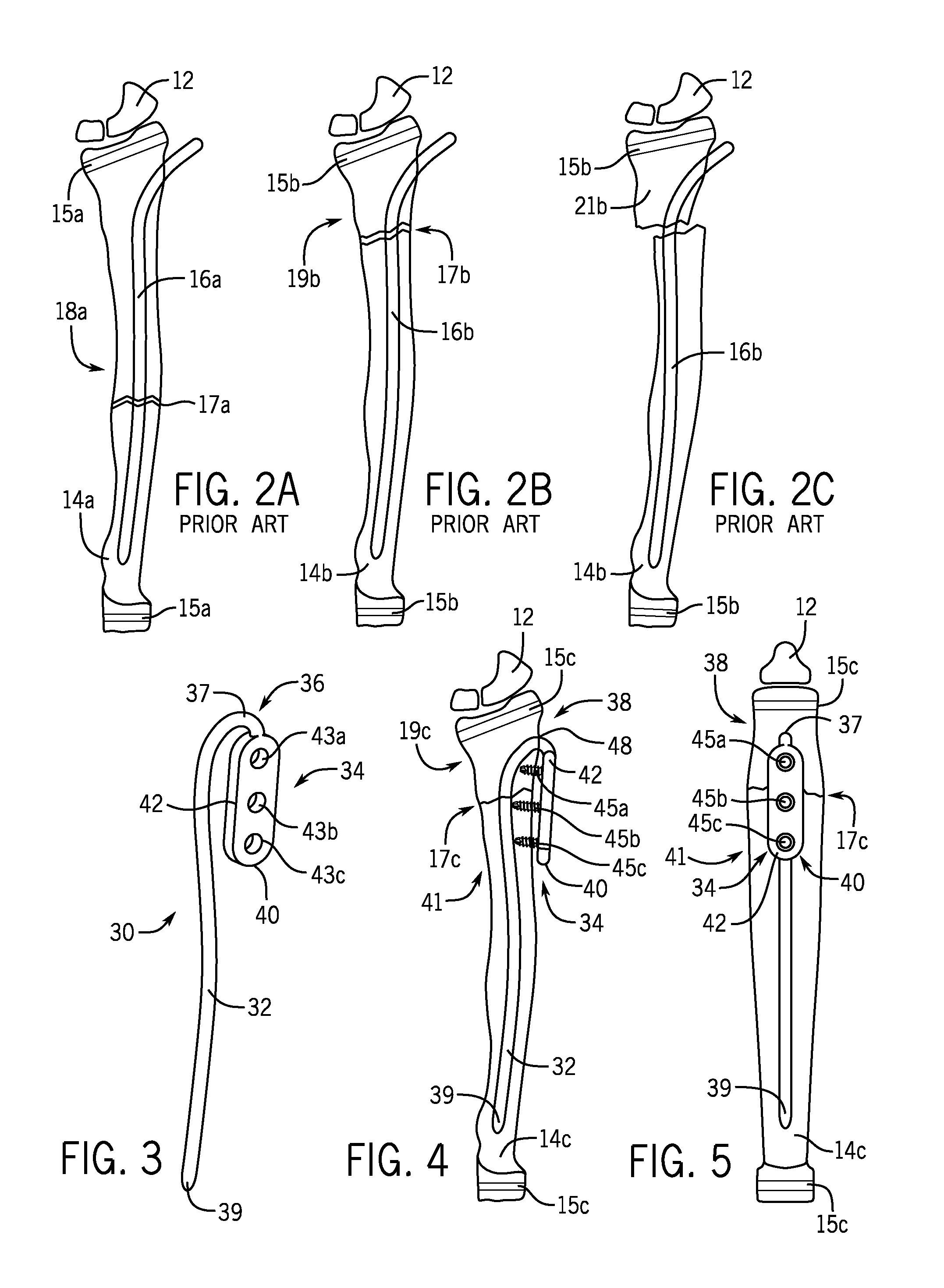Fracture fixation device having clip for stabilizing intramedullary nail
a fixation device and intramedullary nail technology, applied in the direction of osteosynthesis devices, internal osteosythesis, bone plates, etc., can solve the problems of difficult to create a tight fit between the nails and the medullary canal at the fracture site, and the use of flexible intramedullary nails is challenging
- Summary
- Abstract
- Description
- Claims
- Application Information
AI Technical Summary
Benefits of technology
Problems solved by technology
Method used
Image
Examples
Embodiment Construction
[0048]FIGS. 1 to 2C show prior methods for treating fractures in the distal human radius. FIG. 1 shows a human hand 11, carpal bones 12, the ulna 13, and the radius 14. FIG. 2A shows a pediatric radius 14a with growth plates 15a wherein a flexible intramedullary nail 16a has been used to treat a fracture 17a at the diaphysis 18a. FIG. 2B shows a pediatric radius 14b with growth plates 15b wherein a flexible intramedullary nail 16b has been used to treat a fracture 17b at the metaphysis 19b. FIG. 2C is a view of the treated radius 14b of FIG. 2B wherein displacement has occurred at the fracture site. Without a tight fit between the intramedullary canal and the intramedullary nail 16b, there is no control over the proximal fragment 21b, allowing the proximal fragment 21b to displace left in the view of FIG. 2C.
[0049]Turning now to FIGS. 3-5, there is shown an example embodiment of a fracture fixation device 30 of the present invention. The fracture fixation device 30 includes a nail s...
PUM
 Login to View More
Login to View More Abstract
Description
Claims
Application Information
 Login to View More
Login to View More - R&D
- Intellectual Property
- Life Sciences
- Materials
- Tech Scout
- Unparalleled Data Quality
- Higher Quality Content
- 60% Fewer Hallucinations
Browse by: Latest US Patents, China's latest patents, Technical Efficacy Thesaurus, Application Domain, Technology Topic, Popular Technical Reports.
© 2025 PatSnap. All rights reserved.Legal|Privacy policy|Modern Slavery Act Transparency Statement|Sitemap|About US| Contact US: help@patsnap.com



